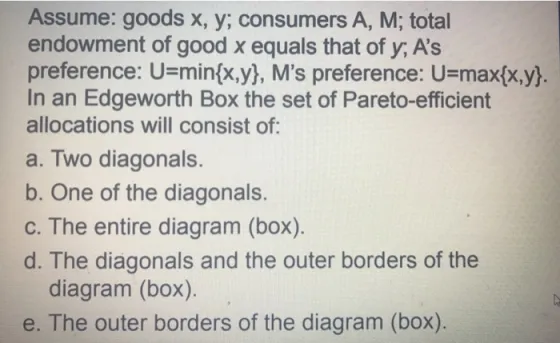Answered step by step
Verified Expert Solution
Question
1 Approved Answer
Assume: goods x, y; consumers A, M; total endowment of good x equals that of y, A's preference: U=min{x,y}, M's preference: U=max{x,y}. In an

Assume: goods x, y; consumers A, M; total endowment of good x equals that of y, A's preference: U=min{x,y}, M's preference: U=max{x,y}. In an Edgeworth Box the set of Pareto-efficient allocations will consist of: a. Two diagonals. b. One of the diagonals. c. The entire diagram (box). d. The diagonals and the outer borders of the diagram (box). e. The outer borders of the diagram (box).
Step by Step Solution
★★★★★
3.39 Rating (158 Votes )
There are 3 Steps involved in it
Step: 1
The set of Paretoefficient allocati...
Get Instant Access to Expert-Tailored Solutions
See step-by-step solutions with expert insights and AI powered tools for academic success
Step: 2

Step: 3

Ace Your Homework with AI
Get the answers you need in no time with our AI-driven, step-by-step assistance
Get Started


